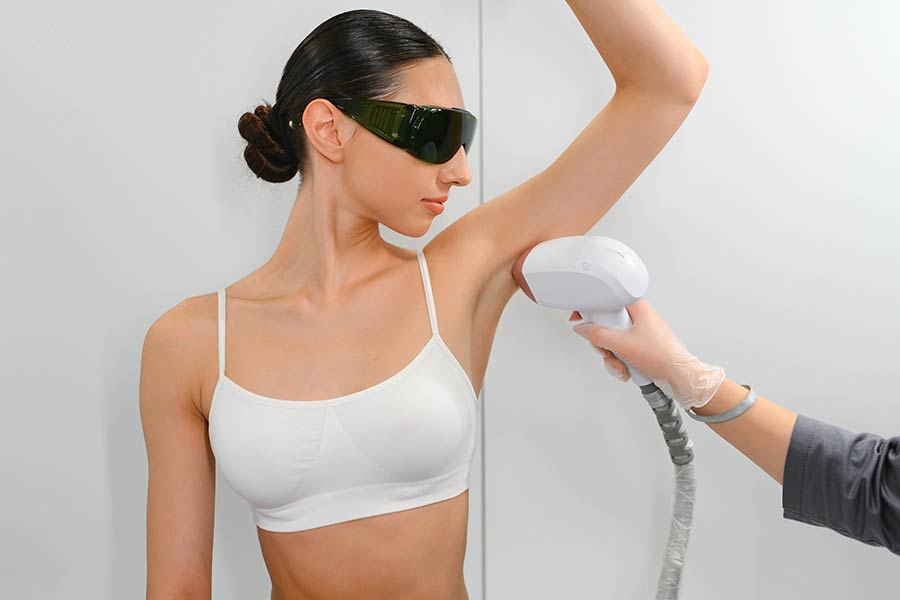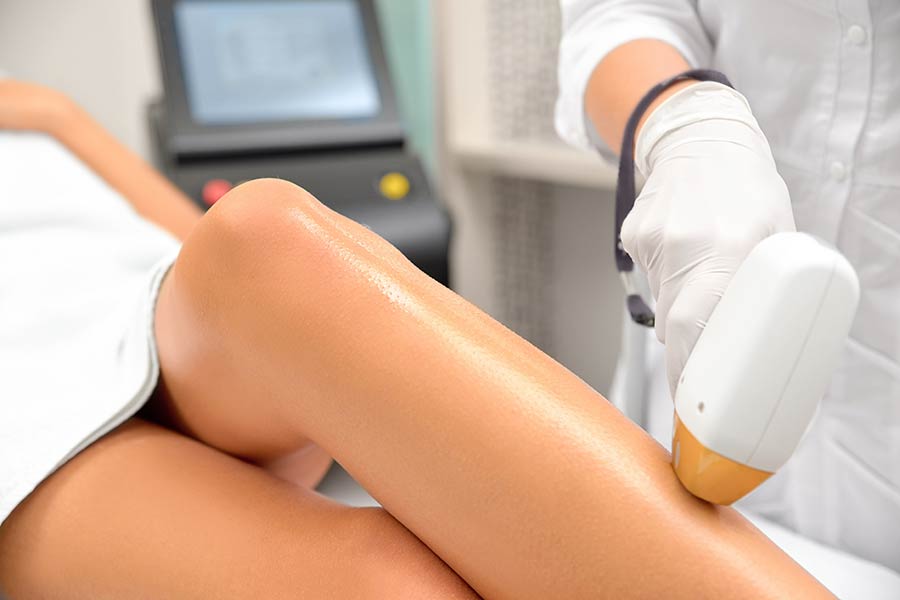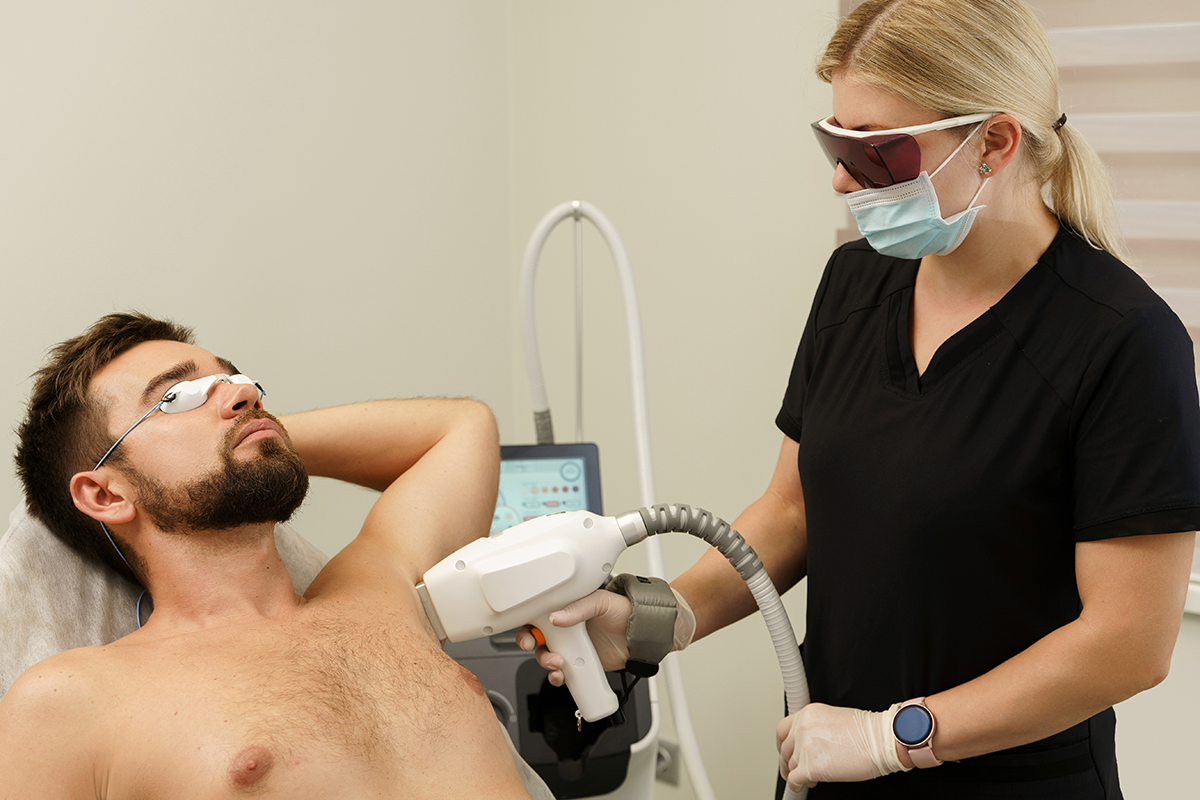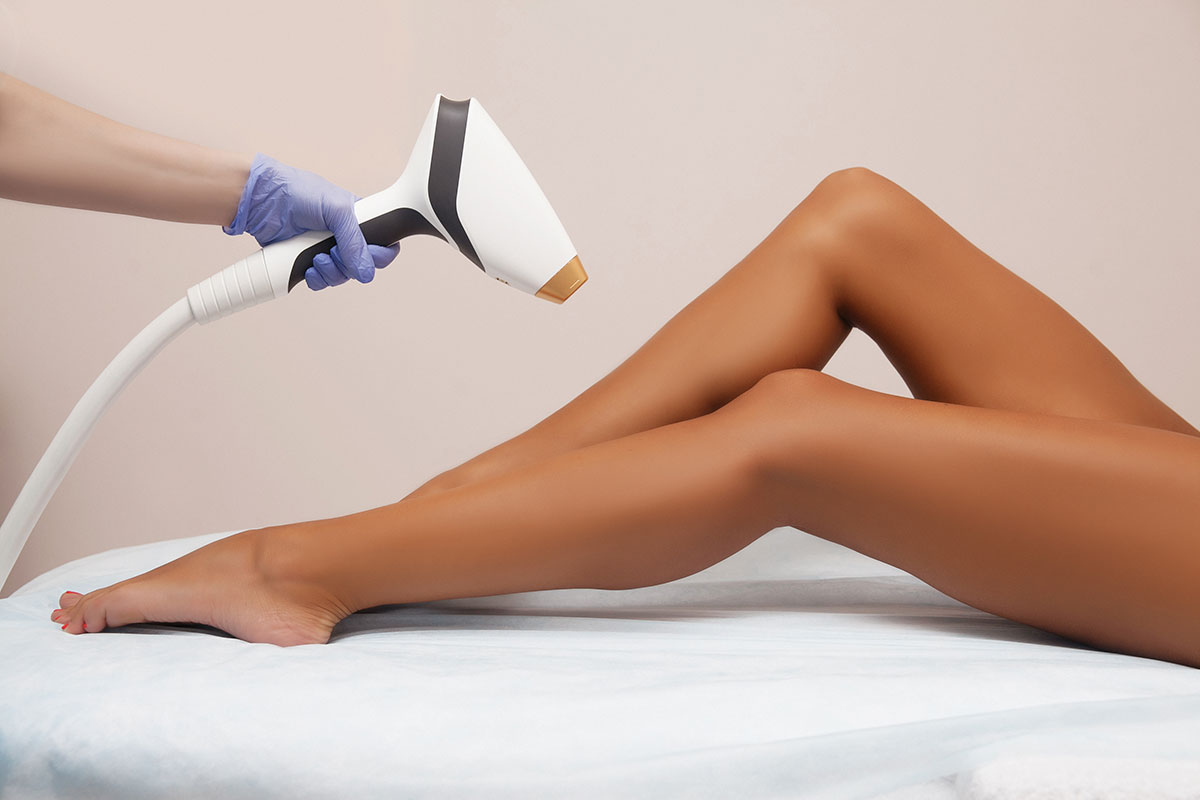Welcome to the vast world of beauty enhancement and self-care, where innovative treatments like laser hair removal are revolutionizing the way we manage unwanted hair. This procedure, once a luxury limited to the elite, has grown in popularity and is now accessible to anyone seeking a longer-lasting solution to hair removal. Can you imagine a life where the tedious chore of daily shaving or the regular agony of waxing is a thing of the past? Well, that's the promise of laser hair removal!
But here's the kicker—like a designer dress, laser hair removal isn't one-size-fits-all. Our skin, the largest organ of our bodies, exhibits an intriguing range of diversity. Some of us have porcelain-toned complexions, others olive, some dark, and many shades in between. This incredible spectrum of human skin types not only adds to the beauty of our species but also plays a vital role in how certain treatments, like laser hair removal, are performed and received.
Just as you wouldn't water a cactus the same way you'd water a rose, different skin types require different approaches when it comes to laser hair removal. That's why it's not only fascinating but crucial to understand how skin type influences the process and outcome of this game-changing procedure. Ready to delve into the science and art of laser hair removal tailored to different skin types? Let's embark on this enlightening journey together. Stay tuned!
Understanding Skin Types
Before diving headfirst into the realm of laser hair removal, let's first familiarize ourselves with the palette of human skin tones, shall we? Understanding your skin type is like reading a manual before using a new gadget—it gives you the necessary insight to ensure the best outcomes. So, let's unravel the mystery of skin types based on a globally recognized classification system, the Fitzpatrick Scale.
Picture this: the Fitzpatrick Scale is a color gradient, with six hues, from Type I to Type VI. Imagine it as a rainbow of skin tones, each with its unique characteristics, especially in response to the sun.
We start our skin type journey with Type I, often found among people with light features, think fair-haired, blue-eyed, and light-skinned. Picture Snow White from the fairy tales! These folks have skin that often burns and rarely tans. Can you imagine how their skin might react to the sun or, say, a laser beam?
Moving on to Type II, slightly darker, usually characteristic of fair-skinned and fair-haired folks, but with a higher chance of getting a tan. It's like moving from a snowy landscape to a slightly warmer spring day. Type II skin still tends to burn, but with careful sun exposure, a tan is possible.
Now, consider Type III, the middle child of the Fitzpatrick family. This skin type can be fair to beige, with golden undertones. Picture a sunny day with mild clouds—a burn might be around the corner if they're not careful, but a tan is a more likely guest.
Type IV skin types are typically of light brown complexion. Think of a late spring day transitioning into summer—this skin tans easily with a lower risk of burns.
As we approach the richer tones, we meet Type V, medium to dark brown skin. Picture a warm, late summer day where the skin can take up the sun quite generously, tans readily, and seldom burns.
Finally, the Fitzpatrick Scale concludes with Type VI, depicting individuals with dark brown to black skin. Imagine the richness of a deep summer night; this skin luxuriously embraces the sun, tanning deeply and burning rarely.
Now, why does this rainbow of skin tones matter, especially when we're talking about laser hair removal? Stay with us as we draw the connection in the coming sections. Isn't it fascinating how our skin can tell such a vivid story about us? Just like we wouldn't judge a book by its cover, let's not make assumptions about our skin without understanding its unique narrative. After all, our skin plays a starring role in our laser hair removal journey!
Laser Hair Removal: How Does It Work?
So, now that we've painted a vivid picture of the diversity of skin types, let's pivot toward the science of laser hair removal. How does it work, you ask? What's the magic that zaps away the pesky, unwelcome hair from our bodies? Let's pop the hood and look into the engine that powers this technology, shall we?
Imagine your hair as a bunch of annoying, hard-to-eradicate weeds growing in your beautifully curated garden, and the laser, a suave gardener whose mission is to get rid of them. But the laser, much like the gardener, doesn't pull out the weeds haphazardly. It has a particular target—the melanin in your hair follicles.
You're probably wondering, "Wait, melanin? Isn't that what gives my skin and hair its color?" Bingo! You've hit the nail on the head! Melanin does indeed lend color to our hair and skin. But in the context of laser hair removal, melanin plays a different role—it becomes the target.
Much like a skilled archer zeroing in on a bullseye, the laser beams highly concentrated light into hair follicles. Melanin in the follicles absorbs this light, transforming it into heat. And guess what happens next? This heat damages the follicles, hindering future hair growth. Kind of like our suave gardener nipping the weeds at the root, isn't it?
It's important to remember, though, that this process isn't a one-and-done deal. Laser hair removal usually requires multiple sessions. And why is that? Well, our hair grows in stages and the laser can only zap the hair that's in an active growth stage. So, you need several sessions to make sure all those stubborn hairs in different growth stages get their share of laser light.
Also, here's an interesting fact: the contrast between the color of your skin and the color of the pigment in the hair follicle determines the effectiveness of the laser treatment. In other words, laser hair removal tends to work best for people with light skin and dark hair. But don't worry, advancements in technology are making it possible for people with different skin types and hair colors to benefit from this treatment too!
Fascinating, right? Laser hair removal is a dance between science and technology, perfectly choreographed to the tune of human biology. It's a performance where melanin takes center stage and the laser plays a supporting role, together creating a show that culminates in smoother, hair-free skin!
Laser Hair Removal and Skin Types
Alright, folks, it's time to explore the intricacies of laser hair removal across different skin types. Think of this journey as an expedition where we're going to uncover how lasers interact with light, medium, and dark skin.
Light Skin (Type I-II)
For those with light skin, or skin types I and II, according to the Fitzpatrick Scale, the process of laser hair removal can be comparatively straightforward. Picture light skin as a clear, calm lake, making it easy for our laser (the fisherman) to spot and target the fish (dark hair). Here, the Alexandrite laser is often the go-to choice. This specific laser has a shorter wavelength, which means it's less absorbed by melanin and can effectively target the hair without causing significant damage to the surrounding skin. It's like using a fine-tuned fishing line designed to catch only the fish while preserving the water's clarity. So, people with light skin, rejoice! Laser hair removal typically works pretty well for you.
Medium Skin (Type III-IV)
Moving along the spectrum, we arrive at medium skin, which encompasses types III and IV on the Fitzpatrick Scale. Now, treating medium skin is akin to navigating a slightly clouded lake. The water's not as clear, but it's still possible to fish effectively. Here, the Diode laser is often the preferred choice. With its longer wavelength, it's able to penetrate deeper into the skin, reaching the hair follicle without causing too much collateral damage to the skin. It’s like using a weighted fishing line that can delve deeper into murkier waters. However, people with medium skin may require more sessions, and there could be a slightly higher risk of skin discoloration. But don't worry, with a skilled practitioner, these risks can be effectively managed.
Dark Skin (Type V-VI)
Finally, we arrive at darker skin tones or types V and VI on the Fitzpatrick Scale. Treating dark skin can be equated to fishing in deep, murky waters. The challenge is to differentiate the hair (fish) from the skin (water) when everything looks quite similar. This is where the Nd: YAG laser steps in. With an even longer wavelength, it can bypass the excess melanin in the skin's surface to focus more on the hair follicles. Picture it as using sonar to find fish in deep, dark waters. It’s an art that requires utmost precision. However, it's essential to note that the procedure may involve potential risks, like hyperpigmentation. That's why it's vital to consult with a knowledgeable and experienced practitioner before diving into the process.
Regardless of your skin type, the key takeaway is that there is a laser treatment option for you. It's all about finding the right laser—the Alexandrite, Diode, or Nd: YAG—that's tailored to your unique skin tone. After all, laser hair removal is not a one-size-fits-all solution, but a personalized path to smooth, hair-free skin!
Importance of Personalized Treatment Plans
You know how everyone's fingerprints are unique? It's the same story with our skin. We all have different skin types, hair colors, and hair thicknesses. Thus, our approach to laser hair removal should be as unique as we are. Imagine buying a suit. A well-fitted suit, tailored to your size, will undoubtedly look better than a one-size-fits-all version, right? Similarly, when it comes to laser hair removal, we need a plan that fits us perfectly—a personalized treatment plan.
Now, you might be wondering, why exactly do we need a personalized treatment plan? Well, consider this: How effective would it be to treat light, thin hair with a laser specifically designed for thick, dark hair? Not very, right? That's why understanding your skin type, hair color, and hair thickness is as crucial as knowing the destination before setting out on a journey.
Here's where a professional consultation comes into play. A specialist can assess these factors and recommend the most suitable treatment for you. It's like having a GPS that considers all possible road conditions to offer the best route for your journey. A well-trained professional will take into account all these variables to ensure the best outcome. After all, when it comes to our skin, there's no room for a one-size-fits-all approach.
But there's more to it than just selecting the right type of laser. We also need to consider the laser's intensity, the number of sessions needed, and even the time between sessions. It's a delicate balance that needs to be struck, and an experienced professional is your best bet to strike it.
In conclusion, remember this: Personalized treatment plans are not a luxury but a necessity when it comes to laser hair removal. It's like the tailored suit that fits you perfectly—made for you, suiting you. So, don't hesitate to seek professional advice and create a plan that is as unique as your skin. After all, when it comes to your body, you deserve nothing but the best!
Pre and Post-Treatment Care for Different Skin Types
Just like how a great recipe requires prep work and aftercare to get that perfect taste, your laser hair removal journey also requires some care before and after your treatment. But it's not a one-size-fits-all approach! Just like the spices you choose for your dish depend on your taste buds, the care you take depends on your skin type. Ready to find out how you can make your laser hair removal experience smoother? Let's dive in!
Before we start, here's a general rule of thumb: before your treatment, avoid sun exposure, waxing, plucking, or any other hair removal method that can irritate the skin. Post-treatment, apply soothing lotions, avoid heat (like hot baths, saunas), and protect your skin from sun exposure. But, as mentioned before, what works for one might not work for another. So, let's take a closer look at specific advice for each skin type.
First off, light-skinned folks with type I and II skin. Pre-treatment, it's essential to avoid tanning as much as possible. This way, the contrast between your hair and skin is more pronounced, making the treatment more effective. Post-treatment, keep your skin hydrated and use a high-SPF sunblock to protect against sunburns.
Moving on to our type III and IV friends with medium skin. Prior to treatment, again, avoiding sun exposure can help prevent unwanted pigmentation. Post-treatment, hydration is key, and sunblock remains your best friend. You may also benefit from using a gentle, non-comedogenic moisturizer.
Finally, those with dark skin types V and VI. Extra care must be taken here as darker skin is more prone to pigmentation changes. Before treatment, ensure that the clinic uses a suitable laser for dark skin to prevent burns. After treatment, use a soothing aloe vera gel to reduce inflammation. Also, consider using a pigment-correcting serum to prevent any discoloration.
Remember, laser hair removal isn't just about the time spent under the laser; it's also about how you prepare for and recover from it. Think of it as a journey, where both the route you take and the stops you make along the way are equally important. So, treat your skin with care and embark on a smooth journey to hair-free skin! After all, your skin deserves it, doesn't it?
Potential Risks and How to Mitigate Them
Just as any adventure may come with a bit of risk, so does the journey of laser hair removal. But fear not! With proper knowledge and care, we can navigate through this journey safely and effectively. So, what are these potential risks, and how can we best mitigate them? Let's break it down skin type by skin type.
Firstly, for individuals with light skin (Types I-II), the risks are relatively minimal. The most common side effects can include temporary redness, swelling, and a slight irritation akin to a mild sunburn. To mitigate these, use a gentle, fragrance-free lotion after treatment, and apply a cold compress to any particularly tender spots. And remember the sunscreen! Keeping the treated skin out of the sun can significantly reduce any discomfort or risk of side effects.
Moving on to medium skin (Types III-IV), the risks become a tad more varied. There's a chance for slight pigmentation changes, either hypopigmentation (lightening of the skin) or hyperpigmentation (darkening). To prevent this, the key lies in sun protection both before and after treatment. Using a high-SPF, broad-spectrum sunblock and dressing sensibly to minimize sun exposure can go a long way in ensuring a smooth, problem-free experience.
Finally, for individuals with dark skin (Types V-VI), the challenges increase. As dark skin has more melanin, there's a higher risk of burns, blisters, and substantial pigmentation changes. But don't let this intimidate you! By choosing a reputable clinic that uses the right type of laser for your skin (like the Nd:YAG laser), you can greatly reduce these risks. Post-treatment, a soothing aloe vera gel, and a pigment-correcting serum can help in managing any potential inflammation or discoloration.
And here's a universal tip, irrespective of your skin type: always have an initial consultation with a certified professional. They can provide personalized advice based on your skin type, hair color, and overall health history. This might just be your most effective tool in mitigating potential risks.
At the end of the day, the road to smooth, hair-free skin is indeed a journey with its own set of challenges. But with the right knowledge, you can make this journey as smooth as the results you're aiming for! Are you ready to embark on this adventure, equipped with your newfound wisdom?
Conclusion
And just like that, we've journeyed through the fascinating world of laser hair removal for different skin types. We've explored the science behind this innovative procedure and how it interacts with the melanin in our hair follicles. We've dived deep into the characteristics of skin types I through VI and understood how each of them reacts to laser hair removal, employing different lasers for optimal results. We've emphasized the importance of personalized treatment plans and discussed the necessity of professional consultations. Remember, the path to flawless, hair-free skin is as unique as you are.
Before we bid adieu, let's reiterate one important point: laser hair removal isn't a one-size-fits-all solution. The nature of your skin, its tone, and your hair color can drastically affect the outcome. This is why we can't stress enough the importance of professional advice. Seek out an experienced, certified professional who can guide you on your journey, ensuring it's safe, effective, and tailored perfectly for you.
We've also talked about pre and post-treatment care for different skin types. From being sun-smart to using soothing lotions, these steps are crucial in making your experience a comfortable one. And let's not forget about the potential risks. Though they might sound daunting, they can be easily mitigated with the right precautions and care.
In conclusion, embarking on the journey of laser hair removal is like mapping uncharted territory – a little daunting but full of exciting possibilities. So equip yourself with knowledge, seek professional guidance, and prepare to unveil smooth, hair-free skin that's as unique as you are.
Well, we've certainly covered a lot, haven't we? And as we come to the end of our journey, we hope you're walking away feeling more informed, confident, and excited about what laser hair removal could mean for you. Ready to take the plunge and start your journey? We're right behind you, cheering you on every step of the way. Safe travels on your journey to smooth, hair-free skin!












